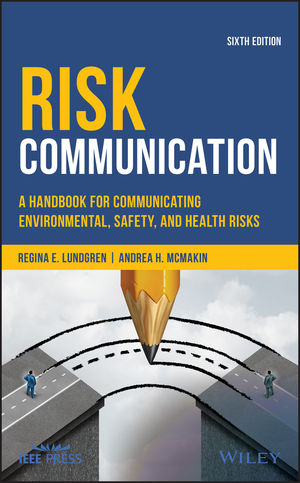Award-Winning Book
When health, safety, or environmental risks take center stage, communicating risk information can be a daunting challenge. This fully updated sixth edition of Risk Communication: A Handbook for Communicating Environmental, Safety, and Health Risks offers sound, scientific research with practical, hands-on advice for pengineers, scientists, professors and students, land use planners, public health practitioners, communication specialists, consultants, and regulators, the must-have guide for professionals who communicate risks.
This updated edition
- + Provides new examples of communication plans in government and industry, the depiction of probability, methods of working with news media, and use of social media
- + Contains a new chapter on partnerships which covers topics such as assigning roles and expectations, ending partnerships, and more
- + Presents real-world case studies with key lessons all risk communicators can apply.
Risk Communication is divided into five self-contained parts:
- Part I provides background information for understanding the basic theories and practices of risk communication.
- Part II explains how to plan a risk communication effort.
- Part III describes how to put risk communication into action.
- Part IV discusses how to evaluate risk communication efforts, including techniques for measuring success.
- Part V discusses communicating risk during and after a health or environmental emergency, as well as considerations for conducting public health campaigns and international risk communication.
Andrea and I are delighted with the end product. Our thanks to the Tri-Tech students for helping us show it off.
